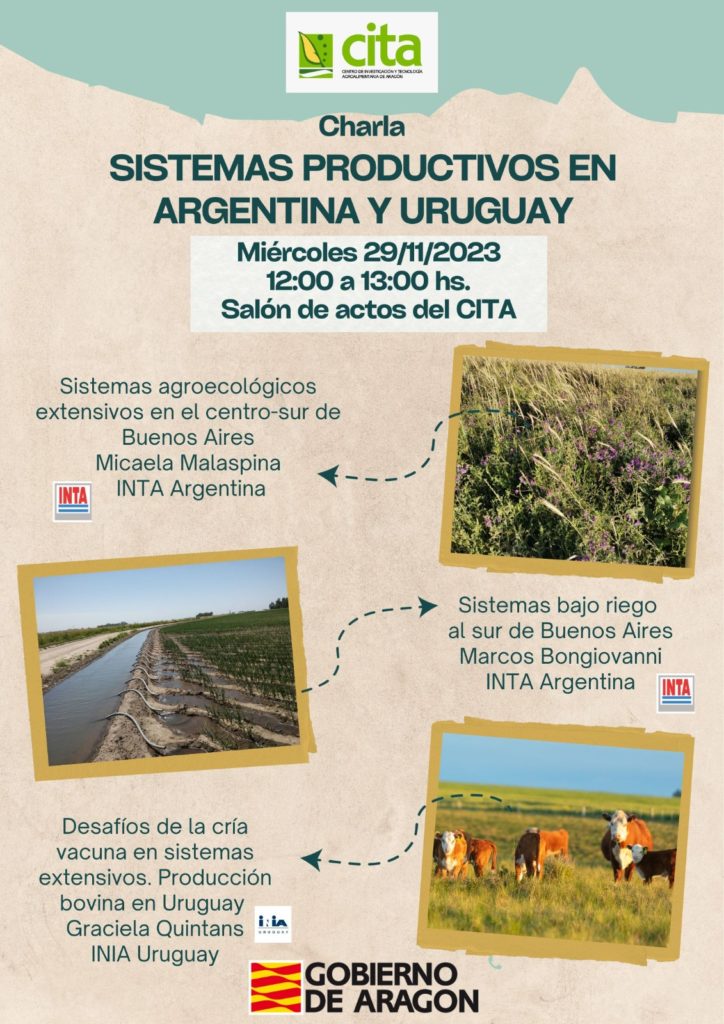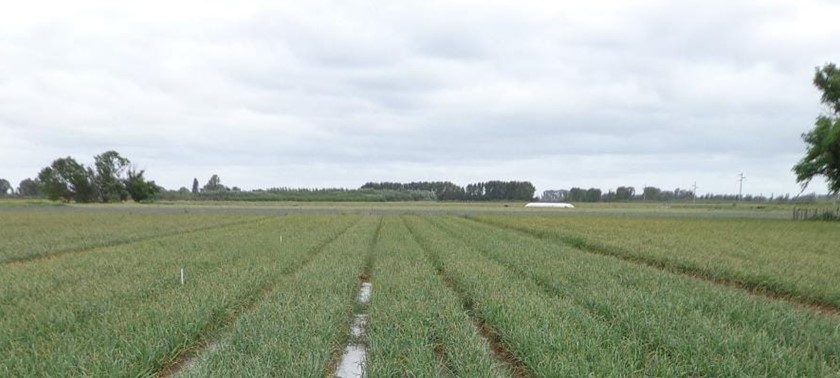A seminar on production systems in Argentina and Uruguay will be held on November 29, 2023. The seminar will take place at the CITA auditorium, from 12 to 1 p.m. It will consist of three presentations:
- Micaela Malaspina, from INTA Argentina, will present extensive agroecological systems in the center – south of Buenos Aires
- Marcos Bongiovanni, from INTA Argentina, will present the systems under irrigation south of Buenos Aires.
- Graciela Quintans, from INIA Uruguay, will present the challenges of cattle breeding in extensive systems.
These three researchers are currently performing doctoral stays on the Aula Dei campus (CITA and EEAD-CSIC).

Marcos Bongiovanni is developing his doctoral thesis at the Aula Dei Experimental Station (CSIC), within the RAMA group. Marcos studied Agricultural Engineering at the National University of Sur and a Master’s degree in Irrigation and Drainage at the National University of Cuyo. Likewise, he completed the second International Irrigation Course of the Ministry of Agriculture, Fisheries and Food in Spain. Marcos has been working since 2021 at the National Institute of Agricultural Technology (INTA) of Argentina, at the Hilario Ascasubi Experimental Station, in irrigation systems. Marcos joined the Aula Dei Experimental Station in September 2023 with a doctoral scholarship from INTA.

His doctoral thesis project is titled “Analysis and optimization of the use of water, energy and crop yield in the irrigable area of Monte Saso de Biota”. This irrigated area, of 1,300 ha, integrated into the Irrigation Community V of Bardenas, in the province of Zaragoza, has a brilliant past of communal use, which declined during the 20th century. The irrigated area was surface irrigated, and land was temporarily assigned to the residents of the town. The lack of investment in these communal lands, water scarcity and the decrease in the number of farmers led to a modernization based on pressurized irrigation by the beginning of the 21st century. This also involved crop diversification and automation. Public funds of 7.6 million € were complemented by private funds from farmers to transform the irrigation of these lands to sprinkler and drip systems. Marcos will diagnose water and energy use and use a simulation model to formulate project improvement alternatives based on alternative energy, low pressure irrigation and higher productivity crops.


